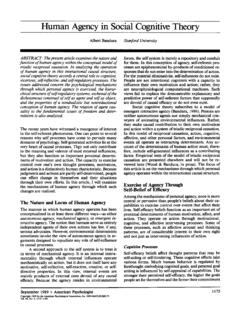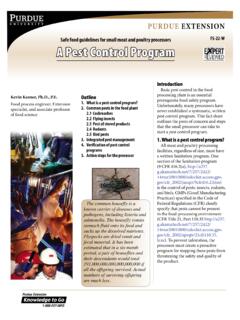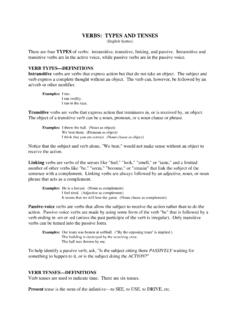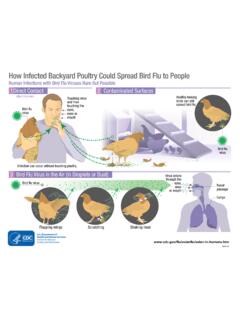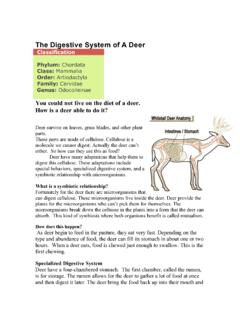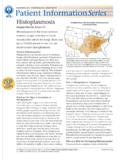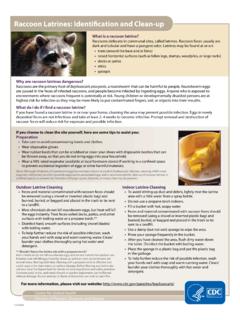Transcription of Chemical and Other Hazards in Painting
1 1 CHEMICALS AND Other Hazards IN Painting This material was produced under a Susan Harwood Training Grant #SH-27667-SH5 from the Occupational Safety and Health Administration, Department of Labor. It does not necessarily reflect the views or policies of the U. S. Department of Labor, nor does mention of trade names, commercial products, or organizations imply endorsement by the U. S. Government. Activity 1: Icebreaker The Coin Race Divide participants in two groups and have them stand in 2 lines. Each group will have to put a coin under their shirts and let it drop down to the floor. Starting from the first person of the line until it reaches the last person. Whichever group finishes first wins the round. The group that loses the round has to answer a question. The race is repeated until all the questions have been answered. This activity serves as an icebreaker and also as a pre-test. Introduction: Among the many types of jobs that day laborers perform, Painting is one that most workers often do.
2 Whether workers are Painting the interior or exterior of a house or building, there are some Hazards that workers should be aware of to prevent illnesses and injuries. In this training, workers will learn: To identify Hazards associated with the job of Painting , such as exposure tochemicals, working at heights and uncomfortable working positions, amongothers. To learn about the dangers associated with the use of Chemical products, thesymptoms of being exposed to chemicals and first aid measures. To provide preventative measures workers can adopt to protect themselvesfrom Hazards in Painting . To provide information on how to read Chemical labels to use mentioned before, a painter applies paint and Other decorative finishes to interior and exterior surfaces of buildings and Other structures. The painter is primarily responsible for preparation of the surface to be painted, such as patching holes in drywall, using masking tape and Other protection on surfaces not to be painted, applying the paint and then cleaning up.
3 Ask participants: Can you think of any Other tasks that painters do? Let participants respond and write the answers on butcher paper. Some of the answers may include: Prepare surfaces to be painted (includes scraping, removal of wallpaper,etc.). 2 Determine what materials will be needed. Use, clean and maintain various equipment. Mix paintings. Supervise apprentices or Other workers. Ask participants to share if they have had any incidents when working with paint. Allow time to hear their stories and keep a note of the incidents, as those stories will be used to illustrate the Hazards that workers are exposed to in the industry of Painting . Activity 2: Learning the Hazards Explain to participants: Painters can work at a variety of workplaces, construction sites, homes, renovation, etc. and constantly face different Hazards . There are many work place issues that can affect potential exposure to hazardous materials used by painters.
4 By considering the main issues and taking some action, employers and workers can more effectively reduce workers exposure to the hazardous products. A hazard is the potential for harm (physical or mental) to the health and safety of people. Work Hazards can be divided in the following categories. (For each category, ask participants to give you examples). Participants will be able to look at images that represent each hazard. Safety Hazards can cause immediate accidents and injuries. Examples are hot surfaces, broken ladders, and slippery floors. Safety Hazards can result in burns, cuts, broken bones, electric shock, or death. Physical Hazards are factors within the environment that can harm the body without necessarily touching it. Physical Hazards include: radiation, high exposure to sunlight/ultraviolet rays, extreme temperatures and constant loud noise. Chemical Hazards are present when a worker is exposed to any Chemical preparation in the workplace in any form (solid, liquid or gas).
5 Some are safer than others, but to some workers who are more sensitive to chemicals, even common solutions can cause illness, skin irritation, or breathing problems. Examples include cleaning products, asbestos, and pesticides. Biological Hazards are associated with working with animals, people, or infectious plant materials. Work in schools, day care facilities, colleges and universities, hospitals, laboratories, emergency response, nursing homes, outdoor occupations, etc. may expose you to biological Hazards . They include viruses, bacteria, mold, body fluids, animal droppings, plants, etc. Ergonomic Hazards occur when the type of work, body positions and working conditions put strain on your body. They are the hardest to spot since you don t always immediately notice the strain on your body or the 3 harm that these Hazards pose. Short-term exposure may result in sore muscles the next day or in the days following exposure, but long-term exposure can result in serious long-term illnesses.
6 Some of the Hazards include frequent lifting, poor posture, awkward movements, repeating the same movements over and over, having to use too much force, etc. Work organization Hazards are Hazards or stressors that cause stress (short-term effects) and strain (long-term effects). These are the Hazards associated with workplace issues such as workload, lack of control and/or respect, etc. Examples of work organization Hazards include workload demands, intensity and/or fast pace, respect (or lack of), sexual harassment, etc. BEWARE: some Hazards can cause immediate damage, such as the safety Hazards or chemicals that can cause skin eruptions, but sometimes the symptoms of an illness can appear months or years after. Using the color category table provided, and color dot stickers, ask participants to stick color dots that correspond to the type of hazard that each represent. And ask them to explain why they chose the categories of Hazards they did.
7 Type of Hazard Color Safety Hazards Physical Hazards Chemical Hazards Biological Hazards Ergonomic Hazards Work Organization Hazards 4 Here are the Hazards to be categorized: Working at heights. Using ladders, platforms and scaffolds. Working in confined spaces. Risk of eye injury. Slips, trips and falls. Risk of injury from falling objects. Exposure to mold, fungi and bacteria. Exposure to bird and rodent droppings. Exposure to paint products, solvents, lead and Other toxic substances. Proximity to flammable or combustible materials. Working in awkward positions, or performing repetitive physical tasks. Standing for long periods of time. Lifting heavy or awkward objects. Exposure to heat and ultraviolet radiation. Noise. Stress. Breathing toxic materials. Electrical Hazards from working close to live electrical power lines or equipment. Shift work or extended work days.
8 Working at a fast pace. Note: Have the Hazards written on butcher paper prior to the training so that you do not have to write them on the spot. More Hazards can be added. Activity 3: Let s Understand Chemicals Explain to the participants: Nowadays, the use of chemicals has spread to almost all branches of work activities; therefore, there are risks in many work places and in particular in the trade of Painting . There are thousands of Chemical substances that are used in large and small quantities, and there are many new ones introduced each year. Unfortunately, most people do not know how to read labels on Chemical products or handle them with the necessary precautions. However, it is your right to know and it is important to be well informed of the correct and safe use of chemicals at the workplace. The first and most essential step leading to the safe use of chemicals is to know what they are used for and to understand the Hazards they pose to your health and the environment, in order to be able to control them.
9 Workers must have the information of the chemicals they are going to use, as well as the Hazards they pose and safety measures. Does anyone know what chemicals are used in paint and what are they used for? Paint contains several kinds of material: pigments, binders, extenders, solvents and additives. The additives themselves can include a vast array of materials, such 5 as dispersants, silicones, thixotropic agents, driers, anti-setting agents, bactericides, and fungicides and algaecides. All the pigments in paint are used to set the color and opacity. The binder, or resin, holds the pigment in place. With the extender, large pigment particles are added to improve adhesion, strengthen the film and save on binder. There is also the solvent or thinner, which can either be organic or water, that is used to reduce the thickness of the paint to make its application better and easier. Along with those base ingredients, the additives within paint consists of several substances.
10 For example, there are also silicones, which are used to improve the paint's weather resistance and driers are placed in paint to accelerate the drying time. Anti-settling agents are used in paint to prevent pigment settling. The final additives in paint are the fungicides and algaecides, which are used to protect exterior paint from molds, algae and lichen. After reviewing the materials in paint, explain to participants that: Chemicals are organic and inorganic substances, they may be natural or synthetic, toxic or not and they can harm people or the environment. Hazardous Chemical products are those that can harm people or the environment. Every day we are exposed to countless Chemical products that have become essential in our life but unfortunately we are not informed about their effects and consequences. Even nowadays, the possible effect that many products can produce on people s health and on the environment is not exactly known.











